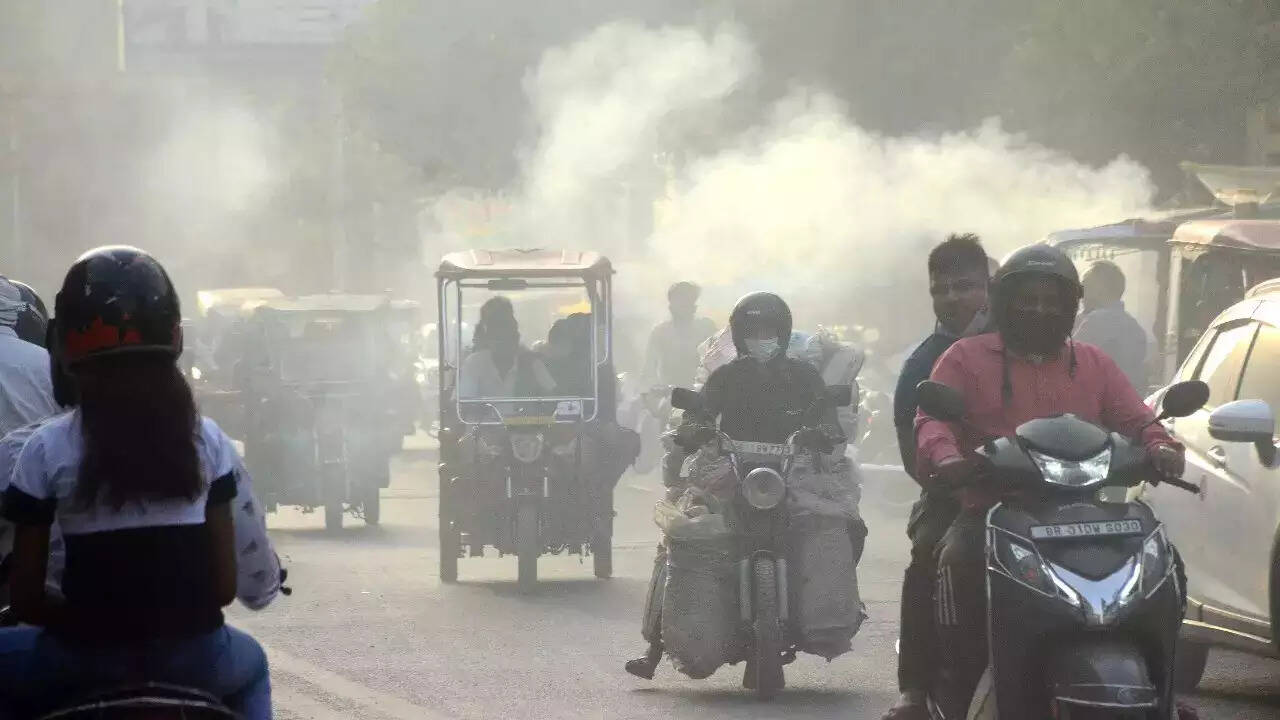- Diagnostics
- 2 min read
Delhi: Bad air due to emissions affecting health the most, says research
Depending on a higher concentration, particulate matter can cause more damage to human lung cells.
Oxidative potential (OP) is a measure of the impact of air pollution on human health and quantifies the oxidising part of particulate matter. Depending on a higher concentration, particulate matter can cause more damage to human lung cells.
The study is based on the samples collected from October 2019 to January 2020 in Delhi. It revealed traffic and resuspended dust related emissions (39%) and secondary sulfate and oxidised organic aerosols (38%) were driving the oxidative potential during the post monsoon period. Biomass burning aerosols dominated (37%) the oxidative potential during the winter fog period. Fireworks related emissions became a significant contributor (32%) to the oxidative potential during Diwali period (four days from October 26-29), with its contribution peaking (72%) on the night of the festival.
"Oxidative potential tells us about the ability of particulate matter to produce oxygenated species while entering the body or how many anti-oxidants it consumes. As oxidative potential consumes anti-oxidants in the body, it is harmful for health. The higher the oxidative potential, the more damage PM can cause to human lung cells," said Sachchida N Tripathi from the civil engineering department at IIT-Kanpur and one of the corresponding authors of the study. The research has been accepted in the Environmental Science and Technology journal.
He added, "We investigated the influence of biomass burning, Diwali fireworks and fog events on the ambient fine particulate matter (PM2.5) oxidative potential during the post-monsoon and winter season in Delhi. The study linked the particulate matter toxicity with the sources. It will help the authorities in effective mitigation strategies."
The other corresponding authors of the research are Vishal Verma from department of civil and environmental engineering, University of Illinois at Urbana Champaign, US, and Neeraj Rastogi, geosciences division, Physical Research Laboratory, Ahmedabad.
Industrial emissions were not a major contributor to oxidative potential during any period, the study said. It added: "The sources contributing to PM2.5 oxidative potential vary substantially over different seasons. It indicates that considering oxidative potential along with mass concentration can give a more complete understanding of potential health risks associated with PM2.5 exposure during high air pollution episodes."
The study claimed to be the first aimed at investigating emission sources contributing to PM2.5 oxidative potential in Delhi using highly time-resolved oxidative potential and PM2.5 chemical composition data.



COMMENTS
All Comments
By commenting, you agree to the Prohibited Content Policy
PostBy commenting, you agree to the Prohibited Content Policy
PostFind this Comment Offensive?
Choose your reason below and click on the submit button. This will alert our moderators to take actions